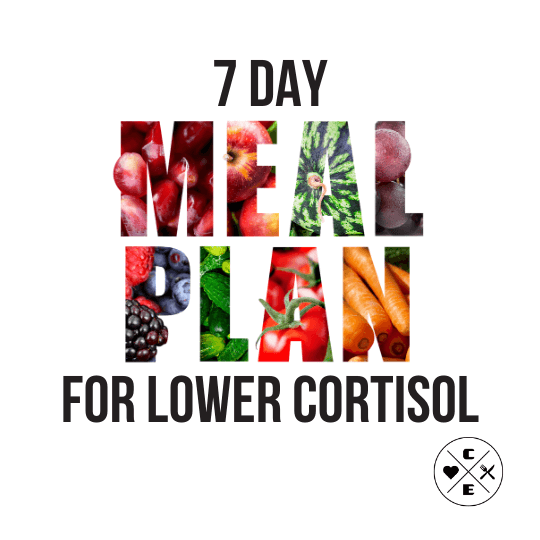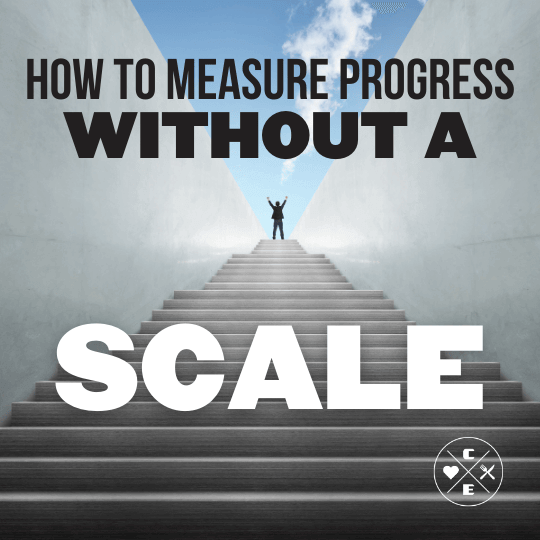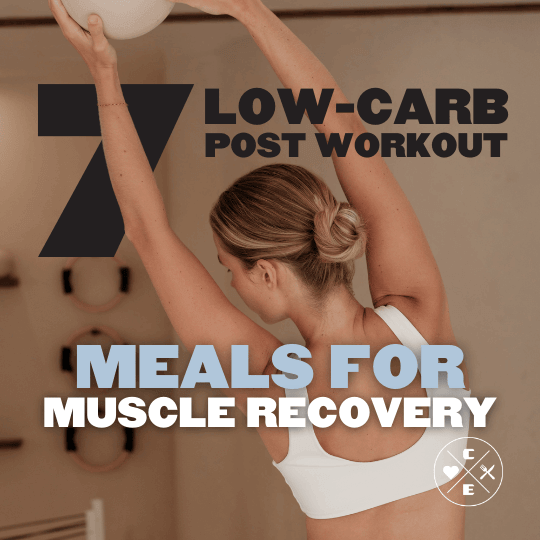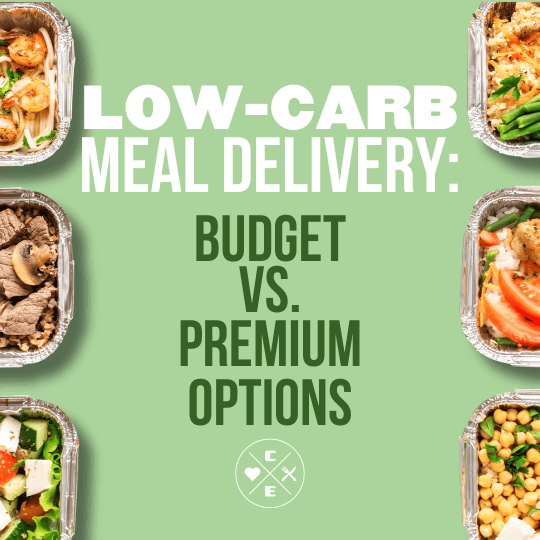Table of Contents
Want to lower your stress levels naturally? Start with your diet. High cortisol, your body's stress hormone, can lead to weight gain, poor sleep, and anxiety. But the right foods can help. Here's a quick guide:
- Eat More: Foods rich in omega-3s (salmon, walnuts), magnesium (avocados, dark chocolate), and antioxidants (berries, green tea).
- Avoid: Processed foods, added sugars, and excessive caffeine.
- Meal Plan: Balanced meals every 3-4 hours with lean protein, whole grains, vegetables, and healthy fats.
This 7-day meal plan includes easy, nutrient-packed meals to help manage stress and improve your well-being. Pair it with light exercise, mindfulness, and good sleep habits for even better results. Ready to get started? Let’s dive in.
Foods and Nutrients That Lower Cortisol
Key Nutrients for Managing Cortisol
Certain nutrients are crucial for keeping cortisol levels in check. Here's a quick breakdown of these nutrients and where to find them:
| Nutrient | Role in Cortisol Management | Best Food Sources |
|---|---|---|
| Magnesium | Helps regulate cortisol levels | Avocados, dark chocolate, pumpkin seeds |
| Omega-3 Fatty Acids | Eases stress response | Salmon, tuna, sardines |
| Vitamin B Complex | Supports adrenal health | Leafy greens, legumes, whole grains |
| Antioxidants | Shields the body from stress | Berries, green tea, dark chocolate |
Top Foods to Help Lower Cortisol
Adding certain foods to your diet can make a big difference in managing stress. Here are some great options:
- Fatty Fish and Nuts: Fatty fish like salmon and magnesium-packed nuts such as almonds and pumpkin seeds can help reduce inflammation and encourage relaxation [2].
- Leafy Greens and Whole Grains: These are rich in magnesium and B vitamins, which are essential for cortisol regulation and maintaining stable blood sugar levels [3].
- Probiotic-Rich Foods: Options like yogurt and kefir support gut health, which is closely linked to cortisol balance [1].
These foods will serve as the foundation for a stress-focused 7-day meal plan.
Foods to Avoid
Certain foods can disrupt cortisol levels and should be limited:
- Processed Foods, Excessive Caffeine, and Added Sugars: These can lead to cortisol spikes and promote inflammation [1].
- Artificial Sweeteners: Substances like aspartame might cause inflammation in some people, potentially interfering with cortisol regulation.
With these dietary tips in mind, you're ready to explore how to incorporate these foods into a practical 7-day meal plan.
7-Day Cortisol-Lowering Meal Plan
How the Meal Plan Works
You've learned about the best foods for managing cortisol - now let's put them into action. This 7-day plan provides three meals and two snacks daily, all packed with nutrients like omega-3s, magnesium, and antioxidants. Meals are spaced every 3-4 hours to keep your blood sugar steady and help manage stress.
Daily Meals (Days 1-7)
| Day | Breakfast | Morning Snack | Lunch | Afternoon Snack | Dinner |
|---|---|---|---|---|---|
| 1 | Greek yogurt, blueberries, almonds | Dark chocolate (1oz) | Grilled salmon, quinoa | Pumpkin seeds, green tea | Sweet potato, grilled chicken |
| 2 | Overnight oats, chia seeds | Avocado toast | Tuna salad, leafy greens | Mixed nuts (1oz) | Turkey, roasted vegetables |
| 3 | Salmon, avocado omelet | Kefir smoothie | Mediterranean bowl | Dark chocolate almonds | Baked cod, brown rice |
| 4 | Whole grain toast, almond butter | Mixed berries | Chickpea curry | Yogurt, honey | Grilled sardines, asparagus |
| 5 | Kefir bowl, granola | Brazil nuts | Lentil soup | Green tea, dark chocolate | Wild-caught salmon, quinoa |
| 6 | Chia pudding, berries | Pumpkin seeds | Grilled chicken salad | Avocado slices | Baked trout, sweet potato |
| 7 | Spinach mushroom omelet | Mixed nuts | Turkey avocado wrap | Probiotic yogurt | Tempeh stir-fry vegetables |
If you're juggling a hectic schedule, Clean Eatz Kitchen can help you stick to this plan without the hassle of meal prep.
Clean Eatz Kitchen Meal Options
Meal prep can feel like a lot, but Clean Eatz Kitchen makes it easy with their ready-to-eat options. They offer dishes like salmon and quinoa bowls ($8.99) or customizable weekly plans ($53.95) designed to fit your cortisol-lowering diet. Their frozen meals are convenient, nutritious, and perfect for stress management.
"Studies have shown that diets rich in omega-3 fatty acids, magnesium, and antioxidants can help reduce cortisol levels and improve overall wellness" [4].
Making the Meal Plan Work
Meal Prep Guide
Set aside 2-3 hours each week to prepare the basics. Divide your ingredients into three main groups:
- Ready-to-eat: Wash and portion foods like berries, nuts, and veggies that help manage stress.
- Pre-cooked staples: Cook items like whole grains, proteins, and roasted vegetables in advance.
- Quick-assembly items: Prepare sauces, dressings, and seasonings for fast meal assembly.
Label containers with dates and store them clearly. This approach not only saves time but also helps reduce daily stress, keeping cortisol levels in check.
Serving Sizes and Balance
With your ingredients ready, focus on creating balanced portions for each meal:
| Component | Portion Size | Daily Servings |
|---|---|---|
| Lean Protein | 4 oz (about a palm) | 2-3 |
| Complex Carbohydrates | 1/2 cup cooked | 3-4 |
| Vegetables | 1 cup raw or cooked | 4-5 |
| Healthy Fats | 1 tbsp oils/nuts | 2-3 |
| Stress-Reducing Foods | 1 serving (e.g., berries, nuts, salmon) | 3-4 |
Aim to eat every 3-4 hours to maintain stable blood sugar levels and avoid cortisol spikes.
Adjusting the Plan
Tailor the meal plan to fit your lifestyle. For vegetarians, replace fish with tempeh or tofu while keeping the same protein portions. If you're short on time, try using pre-made meals like those from Clean Eatz Kitchen to stay on track.
Simple adjustments to consider:
- Modify portions and ingredients based on your activity level and preferences.
- Shift meal times to match your daily routine.
- Add your favorite foods that align with stress-reducing goals.
sbb-itb-1989a25
25 Foods That Reduce Cortisol Levels
Other Ways to Lower Cortisol
Diet is important for managing cortisol, but pairing it with the right lifestyle habits can make a big difference.
Physical Activity
Engaging in low to moderate-intensity exercise can help manage stress effectively. Here are some activities to consider:
| Activity Type | Benefits |
|---|---|
| Walking | Eases stress and is easy for most people (30-45 minutes daily) |
| Swimming | Gentle on joints, promotes relaxation (20-30 minutes, 3x weekly) |
| Yoga | Builds flexibility and reduces tension (20-40 minutes daily) |
| Light Cycling | Boosts mood and helps alleviate stress (30 minutes, 3-4x weekly) |
Stress Relief Methods
Mindfulness techniques, like meditation and deep breathing, work well to keep cortisol levels in check when combined with good nutrition. Here are a few to try:
- Deep Breathing: Use the 4-7-8 method (inhale for 4 counts, hold for 7, exhale for 8) for 5 minutes when feeling stressed.
- Meditation: Spend 10 minutes each morning practicing mindfulness meditation.
- Progressive Relaxation: Tighten and release muscle groups for 15 minutes before meals to promote relaxation.
Better Sleep Habits
Good sleep is key to balancing cortisol. Follow these tips to improve your rest:
| Time and Action | Purpose |
|---|---|
| 2 Hours Before Bed: Avoid screens and caffeine | Minimize overstimulation |
| 1 Hour Before Bed: Dim lights, light stretching | Prepare your body for sleep |
| Bedtime: Keep room cool (65-68°F) | Create an ideal sleep environment |
| Morning: Wake at the same time daily | Support natural cortisol rhythms |
Make your bedroom a peaceful retreat by cutting out noise, reducing light, and removing electronic distractions. Aim for 7-9 hours of quality sleep to help your body naturally regulate cortisol.
Next Steps
Plan Overview
To lower cortisol levels, prioritize nutrition, physical activity, and stress management. Focus on meals rich in omega-3s, magnesium, and antioxidants. This structured plan combines earlier discussed cortisol-lowering foods and lifestyle habits into daily, actionable steps.
Here’s what to track every day:
- Meal timing: Stick to regular eating times to support your cortisol rhythm.
- Physical activity: Incorporate low to moderate-intensity exercises.
- Sleep quality: Pay attention to your sleep patterns and duration.
Getting Started
| Timeline | Action Items |
|---|---|
| Days 1-2 | Review your eating habits and identify stress triggers. |
| Days 3-4 | Stock up on cortisol-reducing foods and meal prep essentials. |
| Days 5-7 | Start prepping meals and establish regular eating times. |
Once these steps are in motion, focus on maintaining consistency for long-term success. For added convenience, pre-prepared meals from Clean Eatz Kitchen can help you stay on track.
Key Tips for Success:
- Begin with small, manageable changes and use a food and mood journal to track progress.
- Set reminders to stick to meal times and stress-management routines.
- Keep backup meals on hand to avoid stress-related eating.




